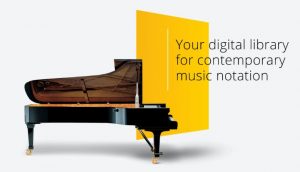By Anna Harutyunyan
The contemporary classical music is full of surprises. At the beginning of the 20th century, composers of classical music started experimenting a lot. In this respect, the postwar era was remarkable not only for literature but also for music. This was the period when modernist, postmodern, neoromantic, and pluralist music emerged.
From the perspective of the musicians, this could be described as one of the most experimental and rich epochs of classical music. Contemporary classical music brought a lot of freedom. It eventually resulted in the birth of electronic music.
But what does define contemporary classical music? Well, some defining characteristics of it are the changes in music composition form, the alterations in music esthetics, the use of extended techniques. Composers, pianists, cellists, violinists, tubists, flutists have started using extended techniques. And musicologists have started searching for techniques already used by musicians.
Why? Well, a lot of reasons could apply. One reason was that extended techniques allow to express yourself in a more out-of-the-box manner. For example, if that’s the piano, you no longer have to limit yourself to playing on the keyboard only. You could use the strings as well; some people go so far as to use the piano’s lid as drums. The piano is not an exception, musicians have started experimenting with other instruments, too.
So, it appears that every musician could come up with their own extended technique. However, what about finding those techniques and, most importantly, what about notating them? This is where modern musicians often face a lot of challenges. The problem is that the same performance technique might be notated differently by different musicians. And when another musician or composer wants to try that technique, they often have a tough time finding the notation symbols for it. Also, extended techniques are not always so easy to perform. And since they are created not so long ago by contemporary artists, it is hard to find high-quality performance videos on the internet.
For this reason, a team of young musicians has created a digital library of both basic and extended contemporary classical music performance techniques and notation symbols. The platform is called Symbolium. This means that whenever you are in need of an out-of-the-box technique, you can search the library, find out how the technique should be performed and how it is usually notated. That’s it!
Of course, there are a lot of other challenges modern musicians face, but this one has got its solution. You can check out Symbolium to explore more extended techniques.
Also, feel free to share your ideas about contemporary classical music in the comments below. We will be more than happy to jump into the discussion.
About the author:
Anna is a music enthusiast and a writer and a part of Symbolium team. Symbolium is a digital library for musicians, composers and music students.
From the editors at Classical Archives . . .
Beyond Bar Lines . . . let’s Listen to Some Works that Might Benefit from Innovative Notation
We put together this short playlist of works that seem like likely candidates for the kind of innovative/alternative notation that Anna writes about in her guest post today.
Subscribers to Classical Archives need only CLICK HERE to listen to it! It contains the following works . . .
- Arvo Pärt – Tabula Rasa: Concerto for Two Violins, Prepared Piano, and Strings
- Sergey Zhukov – Book of Transformation for Prepared Piano
- Steven Stucky – Sappho Fragments for soprano and new-music groups
Enjoy!






Recent Comments